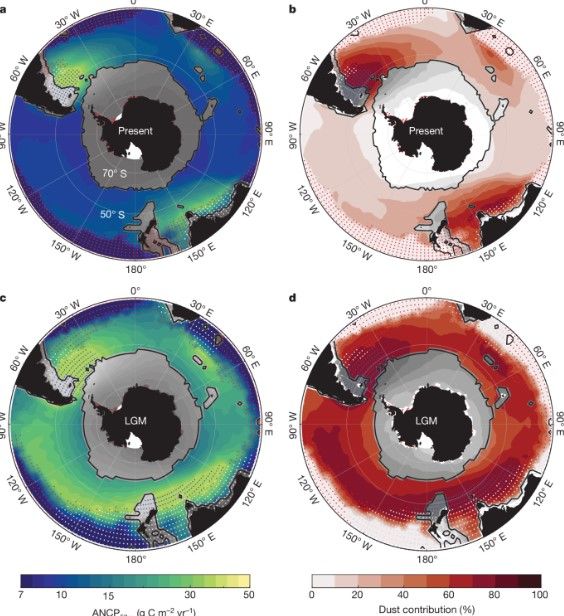According to a study published in Nature today, windblown dust provides enough iron to maintain one-third of the Southern Ocean’s phytoplankton development, which is an important component of the Earth’s climate system. This understanding helps to predict how global warming will affect phytoplankton-driven climate systems. The Southern Ocean serves as a vital climatic “shock absorber,” absorbing up to 40% of human-generated CO₂ annually. Biological processes, including as phytoplankton growth and the subsequent sinking of carbon-rich biomass, are critical to the ocean’s carbon cycle and influence the efficacy of this “shock absorber.”
Phytoplankton, like terrestrial plants, use photosynthesis to turn CO₂ into biomass. They help regulate the Earth’s climate by sequestering carbon after death. However, iron, a critical component for phytoplankton growth, is scarce in the Southern Ocean, reducing production and the effectiveness of the biological carbon pump. Wind delivers iron-rich dust from continents to oceans, providing an important nutrition supply for phytoplankton. Historically, scientists relied on costly research journeys to investigate the impact of dust on phytoplankton growth, which provided limited insights into seasonal and regional variations.
To address these constraints, researchers examined data from robotic ocean floats that monitor ocean parameters such as nitrate concentration throughout the Southern Ocean. They discovered a direct correlation between dust-derived iron supply and phytoplankton development by combining nitrate observations with dust deposition computer models. Their findings indicate that dust currently supports approximately one-third of phytoplankton growth in the Southern Ocean. During ice ages, increasing dust deposition stimulated phytoplankton growth, indicating a function in regulating atmospheric CO₂ levels.
Understanding the link between dust and phytoplankton growth is critical for projecting future changes in ocean ecosystems and fisheries, particularly given projected adjustments in dust delivery due to global warming and land use changes. While some argue that fertilizing the Southern Ocean with iron will help to reduce climate change, questions remain about the ecological implications and long-term effectiveness. By previously examining natural processes like as dust-driven phytoplankton growth, we can better assess the feasibility and effects of such interventions. (PTI)

